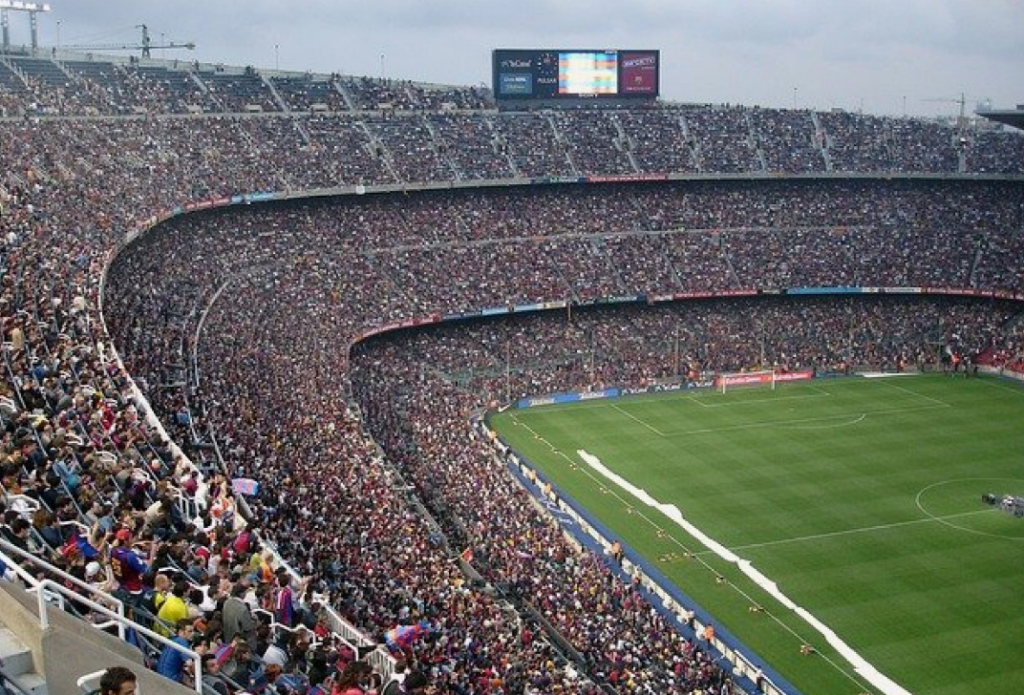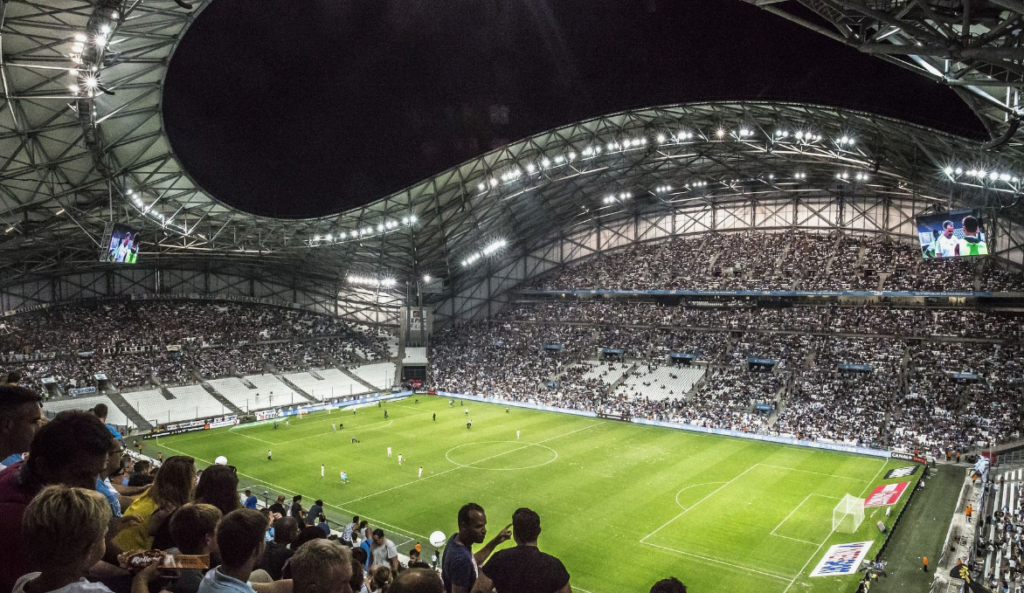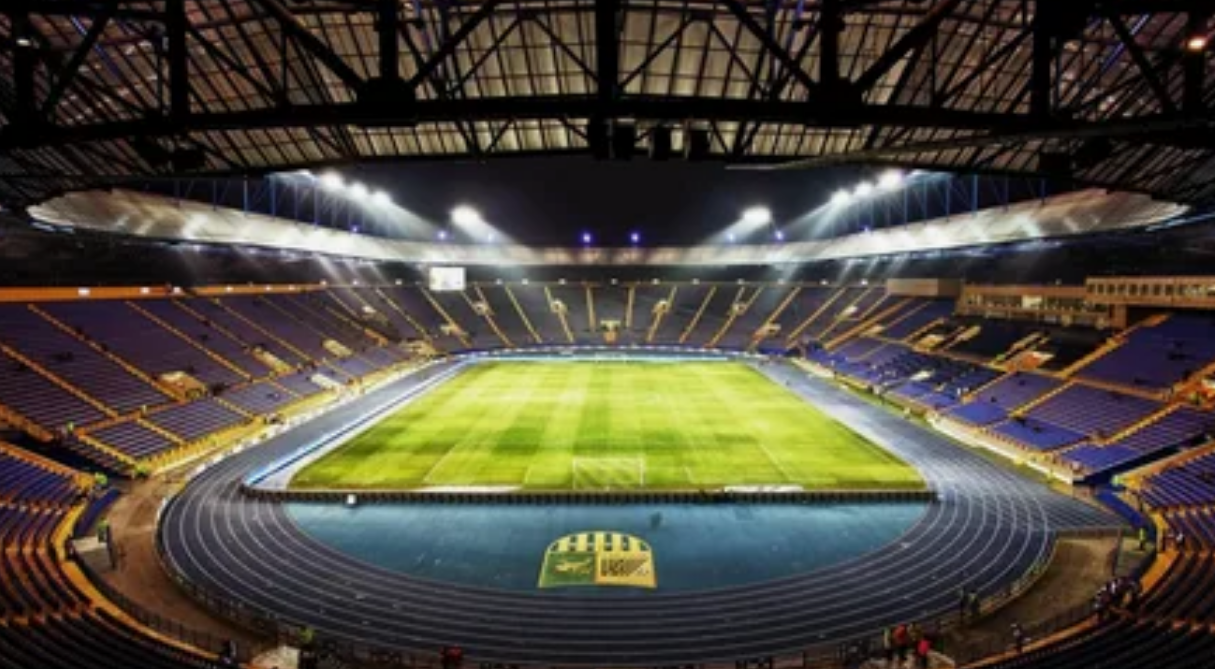Football fields are larger than soccer fields, with football fields typically measuring 100-130 yards long and 50-100 yards wide. Soccer fields, on the other hand, are generally 100-130 yards long and 50-100 yards wide.
The size difference between football and soccer fields impacts gameplay and player strategies, making each sport unique in its own right. Understanding the dimensions of football and soccer field size is crucial for players, coaches, and fans alike.
The larger football field allows for more space for players to spread out and execute strategic plays, while the smaller soccer field promotes quick passes and close ball control. Both sports require different skill sets and tactics due to their field size variations, adding to the excitement and diversity of the sports world.
Football vs Soccer Field Size

History of Football and Soccer
Exploring the history of football and soccer unveils a fascinating journey of how these beloved sports evolved. Both sports have deep roots in various cultures and have distinct origins that have shaped how the games are played today.
Origins of Football- Football vs Soccer Field Size
The origins of football date back to ancient civilizations where kicking a ball around was a common pastime. In the 19th century, the modern version of football began to take shape in England, with the establishment of formal rules and organized matches.
Origins of Soccer- Football vs Soccer Field Size
Soccer, known as football in most parts of the world, has a rich history that traces back to early forms of ball games played in different cultures. The modern game of soccer as we know it today was codified in England in the mid-19th century.
Football Field Size
When it comes to the game of football, the size of the field plays a crucial role in shaping the dynamics of the game. Understanding the standard dimensions and variations in field sizes is essential for both players and fans alike. Let’s delve into the specifics of football field size to gain a deeper insight into this fundamental aspect of the game.
Standard Dimensions
The standard dimensions of a football field, as defined by the International Football Association Board (IFAB), are 100-130 yards in length and 50-100 yards in width. The field is divided into two halves by a halfway line, with a goal centered on each goal line. Additionally, a penalty area extends 18 yards from the goal line and is 44 yards wide.
Variations In Field Sizes
While the standard dimensions provide a baseline, variations in field sizes do exist across different leagues and competitions. Some leagues may have slightly smaller or larger fields based on specific regulations or constraints. These variations can impact the style of play and strategic considerations for teams.
Soccer Field Size
Football and soccer fields have different size specifications. A football field is larger, measuring 100-130 yards long and 50-100 yards wide, while a soccer field is typically 100-130 yards long and 50-100 yards wide. The differences in size impact the gameplay and strategies used in each sport.
When it comes to football vs soccer field size measurements, there are significant differences in the dimensions of the fields. Soccer fields are larger than football fields, and this can significantly impact the game’s pace and style of play. In this article, we will be focusing on the soccer field size, exploring the standard dimensions and the variations in field sizes across different countries.
Standard Dimensions
The International Football Association Board (IFAB) sets the standard dimensions for soccer fields. According to the IFAB, a standard soccer field should be rectangular, with a length of 100-130 yards and a width of 50-100 yards. The field is divided into two halves by a halfway line, and each half is further divided into two quarters by a quarter line. The goal area is a rectangle in front of each goal measuring 20 yards in length and 6 yards in width, while the penalty area is a larger rectangle in front of each goal measuring 44 yards in length and 18 yards in width.
Variations In Field Sizes
While the IFAB sets the standard dimensions for soccer fields, there are variations in field sizes across different countries. For example, in the United States, soccer fields can be smaller than the standard dimensions, with a length of 70-80 yards and a width of 40-50 yards. In contrast, soccer fields in Spain are often larger than the standard dimensions, with a length of up to 130 yards and a width of up to 100 yards. Soccer field vs football field overlay is an interesting way to visualize the differences in size. If you overlay a soccer field on a football field, you can see that a soccer field is much larger, with more space to run and maneuver. This is because soccer is a game that requires a lot of running and ball movement, while football is more focused on short bursts of speed and physical contact. In conclusion, understanding the size of a soccer field is crucial for players, coaches, and fans alike. It impacts the style of play and can even determine which team has the advantage. Whether you are playing or watching soccer, being aware of the standard dimensions and variations in field sizes can enhance your understanding and enjoyment of the game.
Differences In Field Size
Football and soccer fields vary in size, with football fields typically larger than soccer fields. The difference in field size impacts gameplay and strategy in both sports. Football fields are wider and longer, allowing for different tactics compared to the more compact soccer fields.
Football and soccer, while similar in many ways, have distinct differences in field size. These differences play a crucial role in shaping the dynamics and strategies of each game. Let’s explore the specific variations in field size between football and soccer.
Comparing Length
In football, the standard field length ranges between 100 to 130 yards, while in soccer, the length falls between 100 to 120 yards. The difference in length impacts the pace and style of play in each sport.
Comparing Width
Football fields typically have a width of 50 to 100 yards, offering more space for players to maneuver and execute plays. On the other hand, soccer fields have a narrower width of 50 to 100 yards, leading to a faster-paced and more compact gameplay experience.
Field Size Regulations
Field size regulations play a crucial role in the game of football and soccer. The dimensions of the playing field have a significant impact on the style of play and the overall dynamics of the game. Understanding the field size regulations for both football and soccer is essential for players, coaches, and fans alike.

International Standards
When it comes to international standards, both football and soccer have specific regulations governing the dimensions of the playing field. For football, the field size is regulated by the International Football Association Board (IFAB). The standard dimensions for a football field range from 100-130 yards in length and 50-100 yards in width. On the other hand, soccer field size is regulated by the Fédération Internationale de Football Association (FIFA), with standard dimensions ranging from 100-130 yards in length and 50-100 yards in width. The similarity in the field size dimensions allows for a Football vs soccer field size comparison, ensuring that the fundamental playing area remains consistent across different regions and tournaments.
Local Regulations
Local regulations also play a significant role in determining the field size for football and soccer. In addition to the international standards set by governing bodies, local football associations and soccer leagues may have specific regulations for field dimensions. These regulations are often tailored to accommodate the available space and resources in a particular locality, ensuring that the game can be played effectively within the given constraints. The variations in local regulations add an interesting dynamic to the Football vs soccer field size comparison, as different regions may have slightly different playing field dimensions.
Impact on Gameplay
Football and soccer field sizes have a significant impact on gameplay. The larger field in football allows for more long passes and strategic plays, while the smaller soccer field promotes quick, close-range passing and tight defensive tactics. These differences in field size directly influence the style and pace of play in each sport.
Impact on Gameplay When it comes to the field size in football and soccer, has a significant impact on the gameplay. Let’s delve into how the field size affects the speed of play, as well as the tactics and strategies employed in both sports.
Speed of Play
In football, the larger field size allows for more space and longer passes, leading to a faster-paced game. On the other hand, the smaller field size in soccer requires players to engage in quicker, short passes and swift movements to navigate the limited space. This results in a more dynamic and rapid style of play in soccer compared to the strategic build-up often seen in football.
Tactics and Strategies
The field size also influences the tactics and strategies employed by teams in both sports. In football, the expansive field allows for a more strategic and methodical approach, with teams focusing on ball possession, build-up play, and well-orchestrated attacks. Conversely, the smaller soccer field demands quick thinking and precision, leading to a greater emphasis on pressing, counter-attacking, and exploiting spaces efficiently. In addition, the field dimensions impact defensive strategies, with football teams often utilizing a compact defensive shape to limit the opposition’s space, while soccer teams may deploy a high-pressing system to disrupt the opponent’s build-up play. By understanding the impact of field size on the speed of play and the tactics and strategies employed, players and coaches can adapt their approach to maximize their effectiveness on the field.
Player Positioning
Player positioning is crucial in both football and soccer due to the differences in field size dimensions. Understanding the strategic aspects of player placement can greatly impact the outcome of a match.
Formation Differences
In football, formations like 4-4-2 are common due to the larger field size, allowing for more spread-out positioning. On the other hand, soccer formations such as 4-3-3 are prevalent with FIFA soccer field dimensions being smaller, requiring tighter player positioning.
Role Specialization
In football, players have more freedom to roam across the field, whereas in soccer, role specialization is key. Defenders, midfielders, and forwards in soccer need to adhere to specific positions due to the limited space on the field.
Future Trends
The sports industry is constantly evolving, and the field size of football and soccer is no exception. As technology advances and the needs of players change, we can expect to see future trends in the field size of these two sports.
Technological Innovations
With the advent of new technologies, sports facilities are being built with innovative features to enhance the player’s experience and performance. In the future, we can expect to see football and soccer fields equipped with sensor technology. This technology can help players and coaches analyze the game in real-time, which can lead to improvements in the field size. The data collected from this technology can be used to determine the optimal field size, which can help to reduce the risk of player injuries and enhance their performance.

Adaptation To Changing Needs
The needs of players are constantly changing, and sports organizations must adapt to these changes. For example, in soccer, we have seen a shift towards a more possession-oriented style of play. This style of play requires a larger field size to allow players more space to move the ball around. As a result, we can expect to see soccer fields becoming larger in the future to accommodate this style of play.
Similarly, in football, we can expect to see changes in the field size due to the changing needs of players. For example, as the game becomes more focused on speed and agility, we may see narrower fields to allow for more opportunities for players to make explosive plays.
Conclusion
The difference in field size between football and soccer impacts gameplay and strategy. Understanding these variations is crucial for players, coaches, and fans. By recognizing the distinct dimensions, one can appreciate the unique dynamics of each sport and the challenges they present. Embracing these differences enriches the experience of both football and soccer.

